Understanding what a car engine overhaul is can help you maintain your car’s performance. This process involves taking the engine apart, cleaning, inspecting, and replacing damaged parts to restore it to like-new condition.
If you’re noticing issues like smoke or reduced performance, this guide will help you determine if an overhaul is needed.
Key Takeaways
- Engine overhaul is a detailed process that restores engine performance by disassembling, inspecting, cleaning, and replacing worn components.
- There are two main types of engine overhauls: partial, focusing on upper components, and complete, which encompasses the entire car’s engine system.
- Regular overhauls can enhance fuel efficiency, prolong engine lifespan, and are often more cost-effective than full engine replacements.
Understanding Engine Overhaul
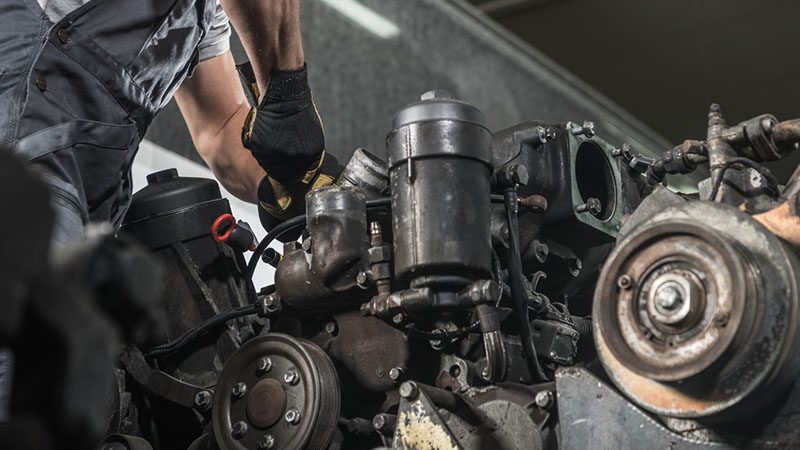
The process of an engine overhaul is a detailed and careful endeavor aimed at bringing an engine back to its peak operating condition, which often includes the necessity for a full engine rebuild. The steps involved are as follows:
- Taking apart the entire engine
- Examining each component for any signs of wear or damage
- Thoroughly cleaning to eradicate impurities
- Substituting parts that have experienced deterioration
By undergoing these procedures, it guarantees that once completed, the engine will function with efficiency and dependability.
An overhaul isn’t merely about rectifying what has failed. Rather, it represents a comprehensive rejuvenation of the engine system. Meticulous cleansing coupled with rigorous inspections enable early detection and remedy of potential complications before they worsen – not just restoring power but prolonging the service life of your motor.
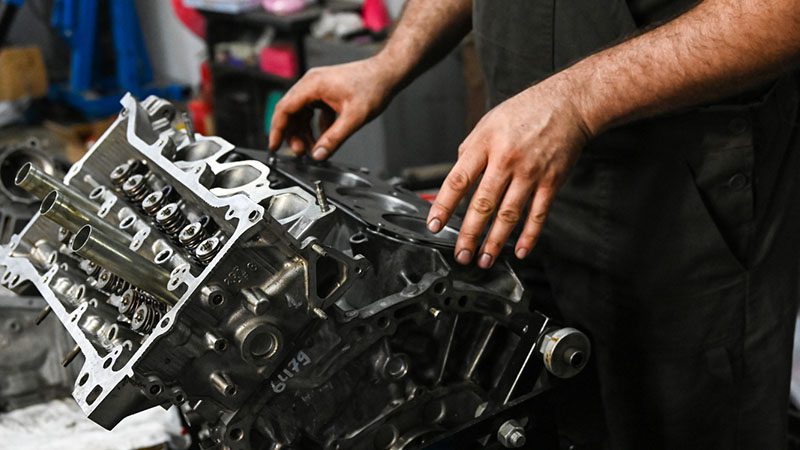
Recognizing symptoms of internal engine wear, such as excessive smoke, knocking noises, decreased performance, and frequent oil consumption, is crucial during an overhaul to prevent costly repairs.
Now possessing clarity on what constitutes an engine overhaul, we can delve into examining various types available alongside their respective uses in different applications.
Types of Engine Overhauls
Engine overhauls can be classified into two main varieties: partial, also known as upper overhauls, and complete or full overhauls.
During a partial overhaul, attention is concentrated on the higher-located engine parts such as cylinder heads, valves, and camshafts. This particular approach is utilized when issues are isolated to these components.
In cases of severe engine damage, such as a cracked cylinder head, a complete overhaul may be necessary to ensure the engine’s functionality.
On the other hand, executing a complete overhaul entails dismantling the entire engine for an exhaustive examination and replacement of any worn-out parts within the whole engine apparatus. The scope of this process extends to elements like:
- crankshaft
- pistons
- bearings
- among others
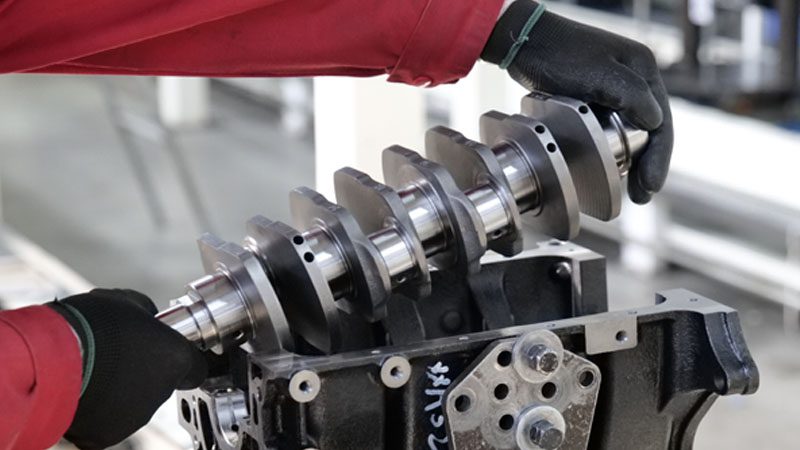
The primary distinction between these types of overhauls lies in their extent. While partial overhauls deal with specific areas of concern within certain components, complete overhauls involve revamping every aspect of the engine system.
In-Frame vs. Out-of-Frame Overhauls
There are two main approaches to engine overhauls: in-frame and out-of-frame. The more extensive method is the out-of-frame overhaul, which necessitates taking the engine entirely out of the vehicle to perform thorough repairs. This allows for an intensive examination and comprehensive repair work that restores the engine to its optimal state.
During an out-of-frame overhaul, mechanics can thoroughly inspect and repair the engine’s cylinders, addressing issues like compression loss and decreased power.
Signs Your Engine Needs an Overhaul
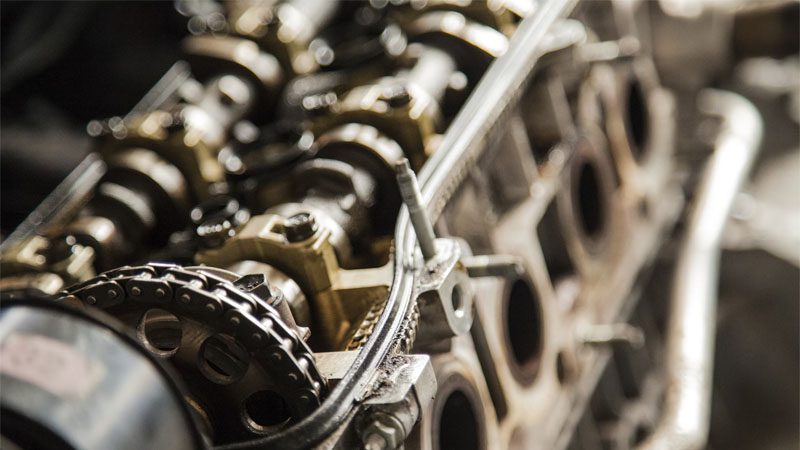
Understanding when your engine requires an overhaul is crucial. Being mindful of the condition of your engine can help avert sudden failures and expensive repairs down the line.
The typical symptoms that suggest an overhaul may be needed are excessive smoke, knocking sounds from the engine, and a reduction in its performance. If there’s excess smoke, it might mean that oil or coolant is burning off within the system, which requires quick intervention.
Hearing knocking noises coming from your vehicle often points to internal complications that could escalate into more serious issues if they’re not dealt with swiftly. Diminished efficiency, especially noticeable in vehicles with high mileage (exceeding 150,000 miles), serves as another warning sign suggesting that an overhaul could be on the horizon.
Additionally, increased fuel consumption can be a clear indicator of engine problems, as worn or malfunctioning components lead to a decline in efficiency and power output.
Moving forward, we’ll delve into particular indicators such as oil sludge accumulation and metal shavings presence—both strong evidence pointing towards the necessity for an engine overhaul.
Oil Sludge and Metal Shavings
Oil sludge, a viscous and adhesive by-product resulting from engine oil degradation and pollutants, hampers the effective lubrication of various engine components. Concurrently, the detection of metal shavings implies extensive wear and tear due to heightened friction among parts within the engine.
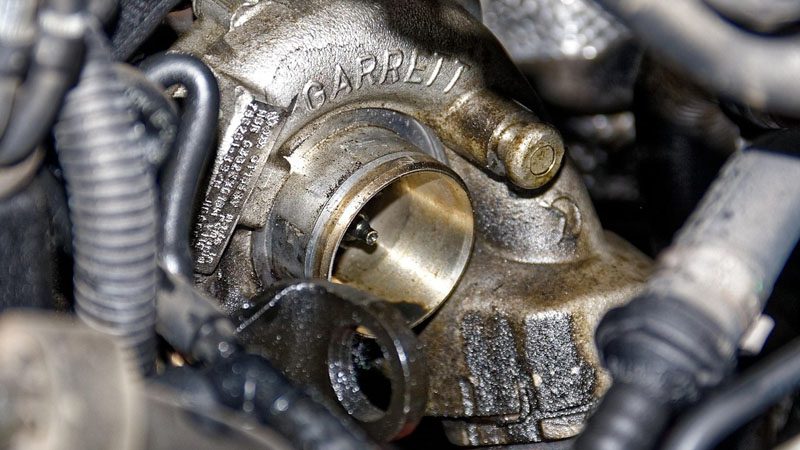
Upon observing these indicators—oil sludge and metal shavings—an urgent overhaul is imperative in order to prevent additional damage while reinstating optimal functionality to the engine.
Increased Oil or Coolant Consumption
The regular requirement to refill oil or coolant typically indicates wear within the engine. This type of deterioration is often caused by piston rings that are no longer effective, which in turn can cause a rise in oil or coolant usage.
During an engine rebuild, damaged parts such as spark plugs may be replaced with new components to ensure optimal performance and reduce costs compared to a full engine replacement.
When leaks lead to contamination of the engine oil and subsequently higher levels of oil accumulate in the crankcase, it becomes clear that there’s a need for an engine overhaul.
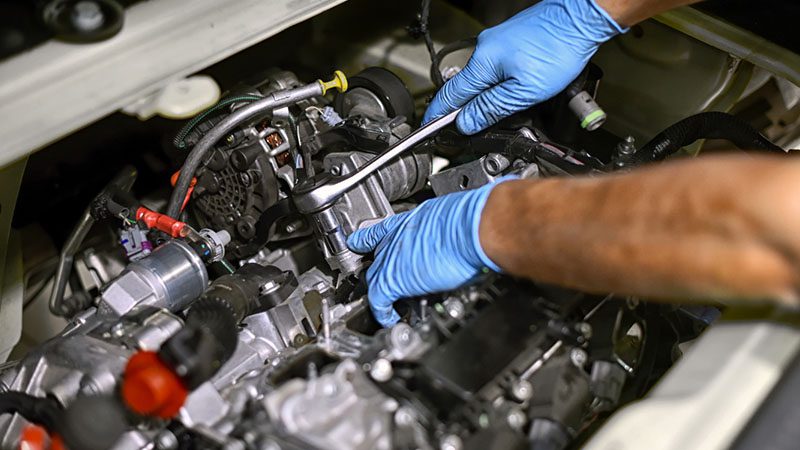
Loss of Power and Performance
An evident decline in engine performance can indicate that the components of your vehicle’s engine may have become worn out. This loss of power and efficiency could stem from a variety of internal problems, such as compression loss or degraded piston rings.
When these types of problems are discovered, it typically suggests that an overhaul is necessary to rejuvenate the engine’s power and operational effectiveness.
The Overhaul Process: Step-by-Step
The overhaul process begins with diagnostic evaluations to identify any existing problems. Once these issues are pinpointed, the engine is methodically disassembled and every part is thoroughly cleaned to eliminate impurities. This critical step aids in precise assessments and helps avert future complications.
It is crucial to have the engine overhauled in a timely manner to prevent further damage and minimize downtime.
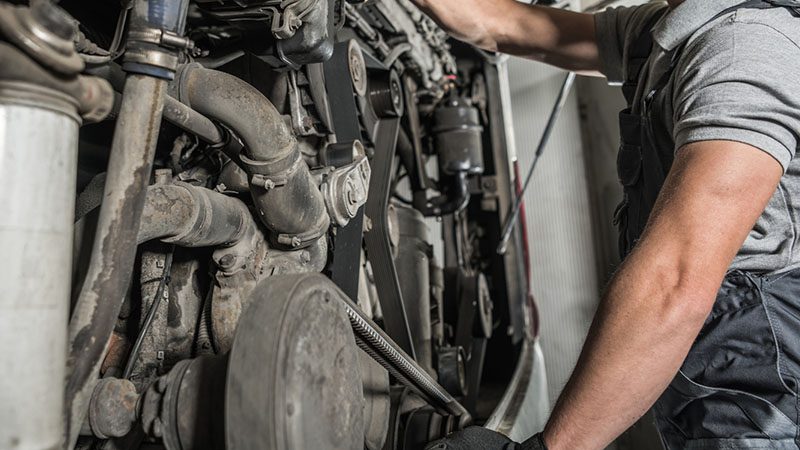
Subsequently, each component of the engine undergoes a detailed inspection for signs of wear or damage. Parts that are found to be deteriorated are replaced with new ones, which guarantees that the engine functions smoothly and at peak efficiency.
During this stage, specific checks like compression and leak-down tests assess vital components such as piston rings, cylinders within the engine, cylinder walls, and valves.
Once assembly is complete, an extensive series of performance tests confirms that the engine complies with operational benchmarks. These measures ensure its dependable performance after being overhauled so it can efficiently return to service on roadways.
Disassembly and Cleaning
The overhaul process necessitates meticulous disassembly and cleansing of the engine. By employing methods such as bead blasting or chemical cleaning, all traces of contaminants including dirt and oil residues are eliminated from the components.
This essential procedure guarantees that every part is spotless and primed for an exhaustive inspection, thereby averting potential complications down the line.
Compared to a factory new engine, this thorough cleaning ensures that the overhauled engine meets high standards of cleanliness and performance.
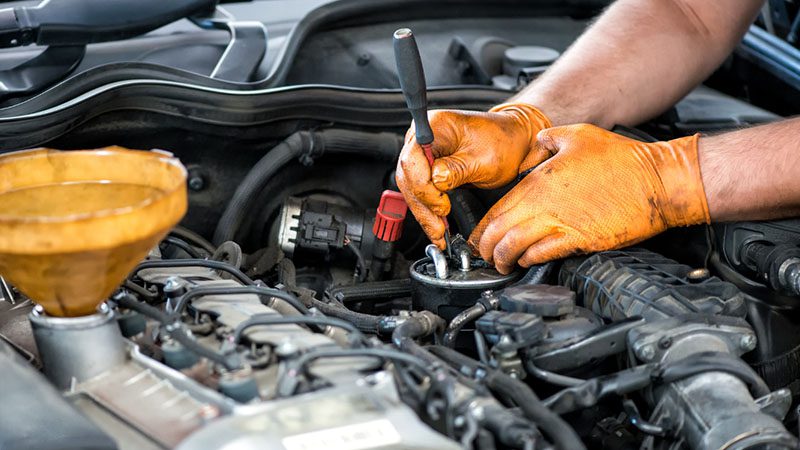
Component Inspection and Replacement
In the examination stage, every single component undergoes a thorough review to check for signs of deterioration and harm. Parts that are frequently changed out consist of piston rings, bearings, gaskets, and valves.
Methods such as compression tests and leak-down assessments help detect problems with valve seals, piston rings, and cylinder head gaskets.
It is vital to substitute parts that show wear in order to revive engine performance and avert subsequent breakdowns.
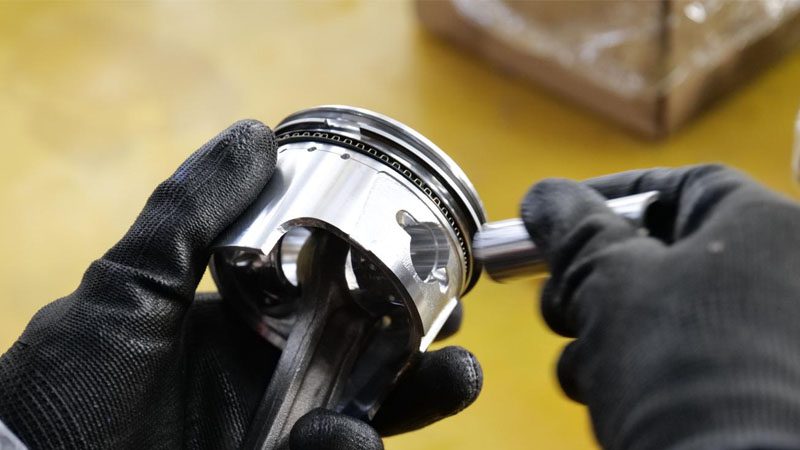
Reassembly and Testing
Following prescribed torque patterns for bolts is crucial when putting together the overhauled engine, as this process ensures that the engine seals effectively and performs optimally.
Once reassembled, a series of rigorous assessments including compression and leak-down tests are performed to validate the proper functioning of the engine.
Ensuring these procedures are followed meticulously confirms that the rebuilt engine conforms to performance expectations and runs seamlessly.
Benefits of Engine Overhaul
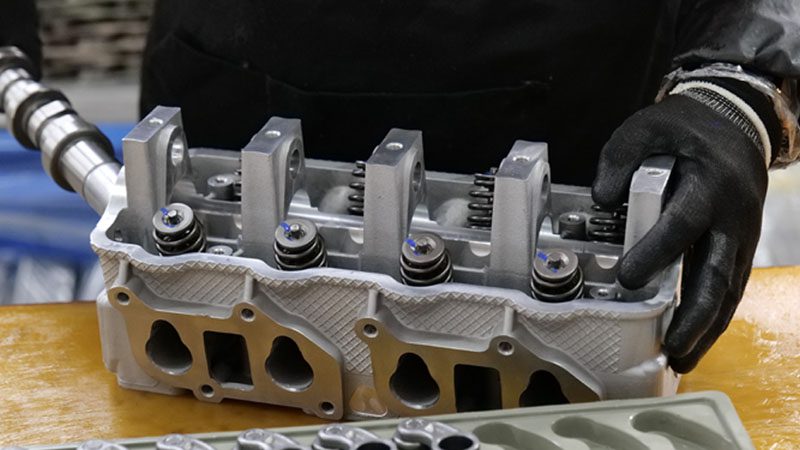
Revamping your engine through an overhaul can lead to numerous advantages, such as improved functionality, enhanced efficiency, and increased dependability.
An overhaul that targets internal wear and defective components can result in a noticeable boost in fuel efficiency—yielding more miles per gallon—which translates into savings on operational costs.
For diesel engines, regular maintenance and timely overhauls are crucial to prevent issues like turbocharger failure and excessive blow-by, ensuring optimal performance and longevity.
Undertaking overhauls helps stave off significant deterioration issues with the engine. Opting for premium quality parts combined with consistent upkeep contributes to prolonging the life of the engine, ensuring it remains productive for many years down the line.

Opting for an overhaul of your car’s engine typically comes at a lower cost than getting a brand-new replacement.
By choosing to invest in an overhaul service now, owners may find themselves saving money by preserving their vehicle’s longevity and sidestepping the steep expenses associated with complete engine replacements.
Enhanced Fuel Efficiency
By conducting an overhaul on an engine, substantial enhancements in fuel efficiency can be achieved. This process involves rectifying worn and faulty parts within the engine, which then allows it to function more efficiently and consequently improves fuel economy.
During the overhaul, owners have the option to implement advanced systems that are designed for improved fuel economy, thereby Boosting the engine’s performance and diminishing fuel usage.
Prolonged Engine Lifespan
To extend the engine’s lifespan and avert significant problems associated with wear and tear, it is crucial to perform routine overhauls.
Employing parts from the original equipment manufacturer (OEM) or equivalent substitutes during these repairs guarantees both compatibility and dependability, thereby enhancing the durability of the engine.
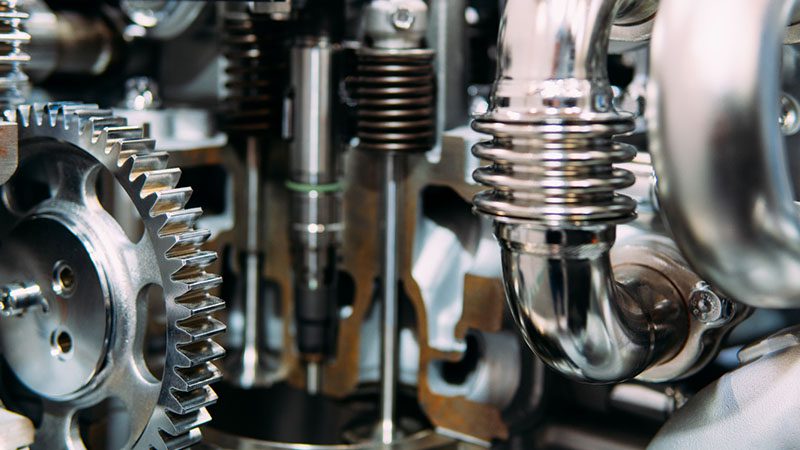
Cost-Effectiveness
An overhaul of the engine typically proves to be a more economical option compared to replacing the entire engine.
While the price for an overhaul can fluctuate depending on how worn or damaged it is, this process usually results in significant long-term cost savings by prolonging the vehicle’s service life and tackling wear and tear without resorting to a complete replacement.
Choosing Between Overhaul and Replacement
Several factors must be considered when choosing between an engine overhaul and complete replacement. The extent of damage, vehicle value, and owner preferences all play a role in this decision.
While engine replacements involve removing the old engine and installing a new one, making them one of the costliest repair solutions, an overhaul typically costs less and can be a viable option when replacing specific worn parts.
The overall cost of an engine overhaul is determined by the vehicle’s condition and the quality of replacement parts used. Choosing an overhaul can offer long-term savings by extending the vehicle’s lifespan and delaying the need for a new purchase.
Assessing engine damage levels and considering performance issues and wear signs can help determine whether an overhaul or replacement is necessary.
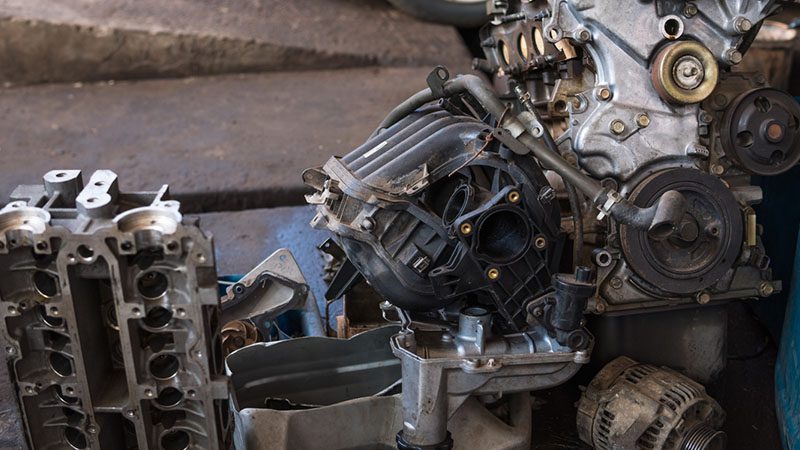
Let’s explore how to assess engine damage and the cost considerations involved in making this decision.
Assessing Engine Damage
Evaluating the extent of damage to an engine is essential in deciding whether it can be restored through an overhaul or if it needs to be completely replaced.
Signs that typically point towards engine damage are noticeable increases in smoke emissions, unfamiliar knocking sounds, and a rise in fuel usage. Finding oil sludge or metal shavings mixed within the engine’s oil is evidence of significant internal deterioration.
Acknowledging these signs plays a key role in making an informed choice between opting for an overhaul of the engine or proceeding with its replacement.
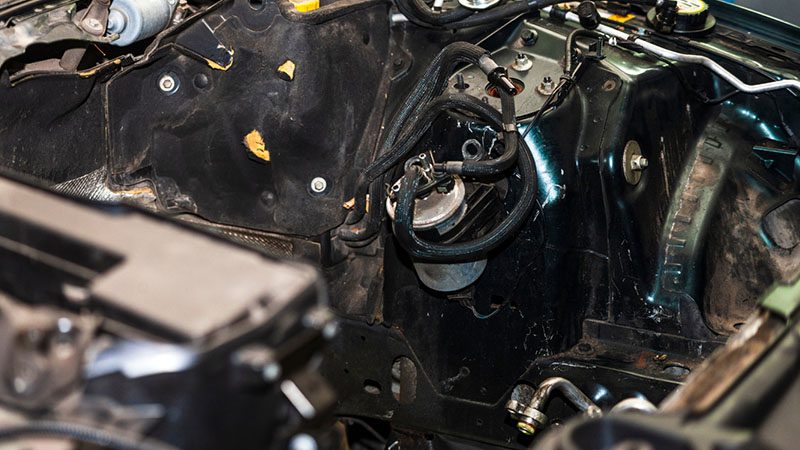
Cost Considerations
When assessing the financial implications of either overhauling an engine or replacing it entirely, one must weigh both the immediate expenditures and potential future cost savings each alternative offers. The expenses tied to an engine overhaul largely stem from labor charges, parts needed for replacement, and any required equipment.
The period in which a vehicle is out of service during an overhaul should also be factored into the total cost analysis. This downtime can significantly influence costs by temporarily rendering your vehicle unusable as repairs are carried out.
Maintaining Your Overhauled Engine
It is crucial to maintain your overhauled engine diligently to guarantee its durability and optimal functioning.
By consistently scheduling routine checks, you can thwart the progression of small defects into substantial issues, thus enhancing the longevity of the revamped engine. Monitoring and maintaining appropriate fluid levels are fundamental in averting potential difficulties.
Incorporating components and lubricants of superior quality is vital for sustaining an overhauled engine’s upkeep. Parts from Original Equipment Manufacturers (OEM) are crafted explicitly for compatibility with your particular engine model, promoting dependability.
Using premium fluids plays a significant role in improving overall engine performance and extending its service life.
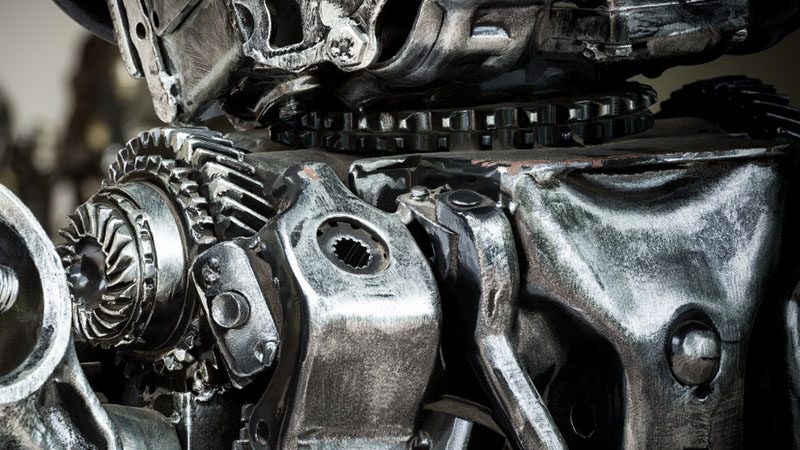
Keeping tabs on how well your overhauled engine performs is essential in identifying imminent issues before they necessitate expensive fixes.
Swiftly addressing any declines in performance can spare vehicle owners hefty expenses associated with major repairs as well as minimize downtime, allowing their engines to maintain efficient and smooth operation.
Regular Maintenance Checks
Regular maintenance inspections play an essential role in identifying small concerns before they escalate into serious complications. Early discovery of problems such as erosion or fluid seepage can avert severe harm and costly malfunctions.
Such assessments prolong the life of the engine and guarantee it operates at its best, ultimately reducing the need for high-priced repairs as time progresses.
Using Quality Parts and Fluids
It’s essential to use premium parts and fluids to preserve the functionality and dependability of your overhauled engine. Parts from the original equipment manufacturer (OEM) are engineered specifically for your engine, ensuring maximum compatibility and efficiency.
Similarly, superior quality fluids are pivotal in keeping your engine operating smoothly, enhancing both its performance and lifespan.
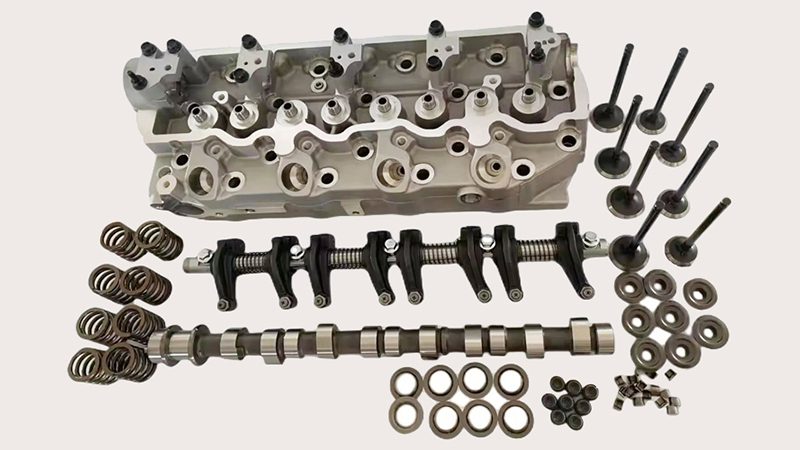
Monitoring Engine Performance
It is essential to keep a close eye on engine performance to catch any problems early on. Signs that there could be issues with the engine include an uptick in fuel usage, a rise in smoke output, sounds of knocking from the engine, and an evident reduction in power.
Staying alert to how your vehicle’s engine is running can help maintain its efficiency and extend its service life, which ultimately leads to avoiding hefty costs associated with major repairs.
Summary
An engine overhaul involves a thorough revitalization that returns an engine to its peak operating condition. This is achieved through the disassembly, examination, cleaning, and replacement of any deteriorated components within the engine.
The advantages of undergoing such a process are considerable: it results in improved fuel efficiency, extends the lifespan of your engine significantly, and can be more economical than other alternatives.
Being vigilant for signs like unusual smoke output, strange sounds from the engine or a drop-off in its performance helps avoid expensive fixes and unplanned malfunctions.
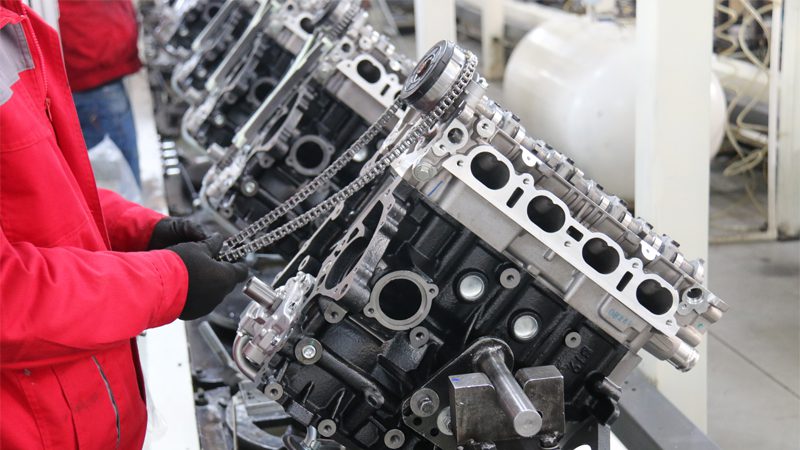
To maximize the benefits gained from an overhauled engine, it’s crucial to commit to regular maintenance while using high-quality replacement parts and keeping close tabs on how well your engine performs post-overhaul.
Sustaining these practices guarantees that your vehicle continues to operate at its best for many years ahead. Opting for an overhaul not only rejuvenates your automobile, but also contributes towards long-term financial savings and grants you greater confidence in your vehicle’s reliability.
If you’re looking for a reliable engine parts supplier, Nanjing Woda Auto Technology Co., Ltd. provides high-quality OEM and aftermarket parts, including cylinder heads, crankshafts, camshafts and complete engine solutions. Contact us today to discover how we can support your business.
Frequently Asked Questions
What is an engine overhaul?
An engine overhaul is a comprehensive process that involves disassembling and inspecting the engine, replacing worn parts, and cleaning to restore it to optimal performance.
This ensures the engine operates efficiently and reliably.
What are the signs that my engine needs an overhaul?
If you notice excessive smoke, knocking noises, decreased performance, increased oil or coolant consumption, or find oil sludge or metal shavings in your engine oil, it’s a clear indication that your engine may need an overhaul.
Address these symptoms promptly to prevent further damage.
What are the benefits of an engine overhaul?
An engine overhaul significantly enhances fuel efficiency, prolongs engine lifespan, improves performance, and is more cost-effective than a complete engine replacement.
This solution provides a practical way to maintain vehicle reliability and reduce long-term expenses.
How do I choose between an engine overhaul and replacement?
Choose an engine overhaul if the damage is not extensive and you’re looking for a cost-effective solution to extend your vehicle’s life.
Opt for replacement only if the damage is severe and the costs justify a new engine.
How can I maintain my overhauled engine?
To keep your overhauled engine in excellent condition, it’s essential to perform consistent maintenance inspections, utilize parts and fluids of superior quality, and meticulously track the engine’s performance.
Adhering to these strategies is key for averting major complications and guaranteeing that the engine functions at its best.

.jpg.webp)



